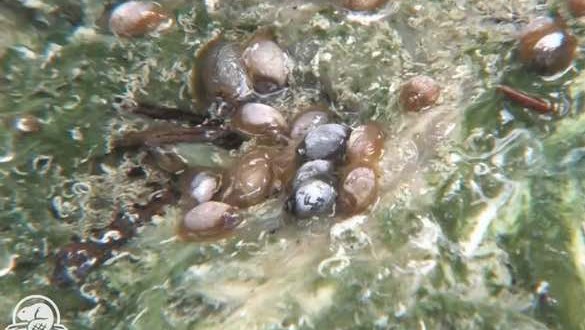A man is facing up to $75,000 in fines and a year in jail after he was caught in the thermal pool at the Cave and Basin National Historic Site — home to the endangered Banff Springs Snail.
Around 2 p.m. on Nov. 26, Parks Canada staff reported that a man was bathing in the cave’s pool in Banff National Park.
“Park wardens responded and arrested the suspect, who was subsequently charged with entering a closed area under the national parks general regulations and Species At Risk Act,” Mark Merchant, spokesman for Banff National Park, said Wednesday in an emailed statement. “Bathing in the thermal pools damages the snails’ ecosystem.”
The man, who Parks Canada did not name, is to appear in Canmore court on Jan. 14.
Parks Canada says the snail made history in 1997 as the first mollusk ever to be listed as threatened by the Committee on the Status of Endangered Wildlife in Canada. It is considered the most at-risk species in Banff park.
A government website says the snail was redesignated as endangered in 2000, which means it faces imminent extirpation or extinction.
Parks Canada says the snails thrive in water between 30 and 36 C — which is slightly cooler than the average relaxing bath.
The government says people who bathe in the thermal spring pool can kill or harm snails by disturbing their eggs or fouling the water with chemicals, deodorants and insect repellents.
Agencies/Canadajournal
 Canada Journal – News of the World Articles and videos to bring you the biggest Canadian news stories from across the country every day
Canada Journal – News of the World Articles and videos to bring you the biggest Canadian news stories from across the country every day



